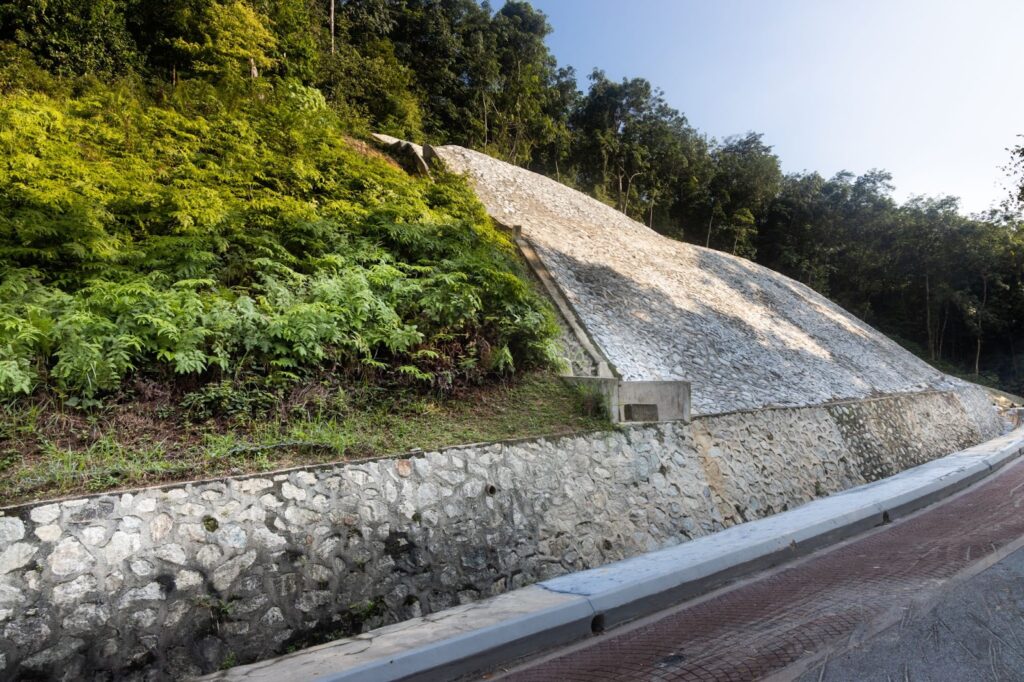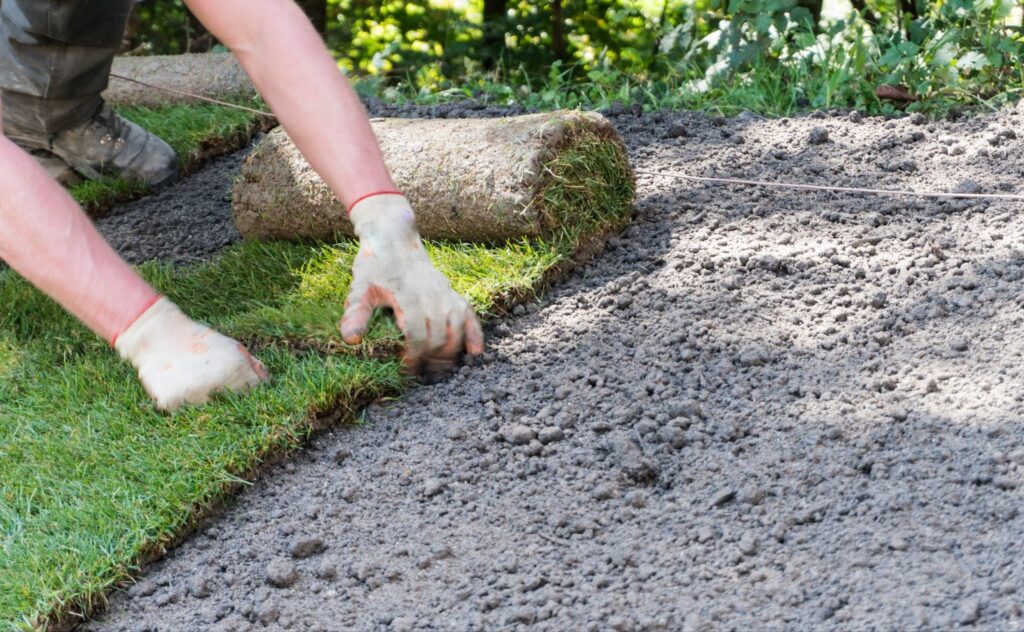Erosion poses a formidable challenge in landscaping, threatening the integrity and sustainability of outdoor spaces. This process, driven by water, wind, and human activities, gradually undermines soil health, water quality, and the aesthetic appeal of landscapes.
The importance of erosion control transcends mere visual considerations, touching on crucial environmental and economic aspects. Effective erosion management strategies are essential for preserving topsoil, preventing pollutant runoff into water bodies, and ensuring the long-term viability of landscaping projects.
As we explore the significance of erosion control within the landscaping industry, we will explore the science behind erosion processes, the impact on ecosystems, and the innovative solutions landscaping professionals employ to combat this pervasive issue.
This article provides a comprehensive overview grounded in professional knowledge and industry insights, highlighting why erosion control is a responsibility and a necessity for sustainable landscaping practices.
Erosion control: the shield against environmental wear and tear
Erosion control is a formidable shield against the relentless forces of environmental wear and tear, safeguarding the foundation upon which vibrant ecosystems and human-designed landscapes rest.
While part of the Earth’s ongoing cycle of renewal and change, this natural process becomes an adversary when accelerated by human activity, deforestation, improper land use, and the increasing severity of weather events due to climate change.
The topsoil, a treasure trove of organic matter, microorganisms, and nutrients, serves as the lifeblood of terrestrial plant life. This layer, however, is particularly vulnerable to erosion’s insidious grasp.
Water erosion, with its powerful runoff during heavy rains, swiftly removes this fertile layer, carving pathways through the landscape and depositing soil into rivers and lakes, where it contributes to other environmental issues such as sedimentation and water pollution.
Wind erosion, on the other hand, picks up loose, dry topsoil, dispersing it into the atmosphere and across vast distances, depleting the land’s fertility and degrading air quality.

For landscaping companies, the stakes are high. The loss of topsoil translates directly into diminished landscape vitality. Gardens, parks, and green spaces rely on the complex ecosystem services of healthy soil, including water filtration, nutrient cycling, and support for plant roots.
Erosion strips away these capabilities, leaving behind terrain where only the hardiest species survive, often at the expense of the diverse flora that once flourished there.
The challenge for landscaping professionals is to design spaces that captivate, inspire, and implement forward-thinking strategies that counteract erosion’s effects. This involves a multifaceted approach, integrating erosion control measures into the very fabric of landscape design.
Techniques such as contour planting, using ground covers and mulches, and constructing physical barriers like retaining walls and terraces diminish water flow velocity and anchor the soil. Similarly, strategically planting windbreaks significantly reduces the impact of wind erosion.
The selection of plants plays a crucial role. Opting for native species well-adapted to the local climate and soil conditions creates a more resilient landscape. These plants typically have deep, extensive root systems that effectively bind the soil and reduce runoff, further fortifying the landscape against erosion.
Effective erosion control is not merely a technical necessity for landscaping companies; it’s an essential practice that marries aesthetic appeal with ecological sustainability.
By adopting and promoting these measures, landscapers enhance the beauty and functionality of the spaces they create and contribute to the broader environmental imperative of preserving our planet’s soil and water resources for future generations.
Why does it matter so much?
First and foremost, erosion control is pivotal in preserving soil health. Healthy soil teems with life and is the cornerstone of any successful garden or outdoor space. It supports the complex ecosystem of microorganisms, insects, and plants, contributing to a landscape’s overall health and aesthetic appeal. We safeguard this vital resource by preventing topsoil from washing or blowing away.
Second, erosion control measures protect water quality. When erosion occurs, it takes soil with it and carries fertilizers, pesticides, and other pollutants into nearby streams, rivers, and lakes.
This runoff devastates aquatic ecosystems and contaminates drinking water sources, leading to broader environmental and public health issues. Implementing erosion control strategies helps keep our waterways clean and supports biodiversity.
Erosion control is essential for maintaining landscape aesthetics. Erosion leads to unsightly gullies, bare patches, and sediment deposits that detract from the beauty of a garden or green space. For landscaping companies focused on creating visually stunning environments, preventing erosion is key to ensuring that landscapes continue to impress and inspire.
Strategies for effective erosion control
Landscaping companies employ various strategies to combat erosion, each tailored to the specific needs of the site and the landscape design. Some of the most effective methods include:
- Planting vegetation: The roots of plants and trees bind the soil together, making it more resistant to erosion. Selecting deep-rooted species that withstand local weather conditions is smart for any landscaping project.
- Using mulch and ground covers: Applying mulch or planting ground covers significantly reduces soil loss by protecting the soil surface from rain impact and wind.
- Building retaining walls and terraces: In areas with steep slopes, constructing retaining walls or terracing the landscape slows water flow and reduces soil erosion.
- Installing drainage systems: Proper drainage systems ensure water moves through the landscape without eroding the soil. This includes everything from simple French drains to more complex systems involving culverts and silt fences.
The future of erosion control in landscaping

As environmental awareness grows, so does the emphasis on sustainable landscaping practices. Erosion control is at the forefront of this movement, with innovative techniques and materials constantly being developed. From biodegradable erosion control blankets to advanced hydroseeding methods, the future of erosion control looks promising.
These advancements enhance the efficacy of erosion control efforts and contribute to the overall sustainability of landscaping projects.
Final thoughts: the bedrock of sustainable landscaping
Erosion control is more than a technical necessity; it’s the foundation of sustainable, environmentally friendly landscaping. By preventing soil loss, protecting water quality, and preserving the natural beauty of landscapes, erosion control measures play a pivotal role in the success of any landscaping project.
For landscaping companies and their clients, investing in erosion control is not only a matter of environmental stewardship; it’s a strategic decision ensuring their outdoor spaces’ longevity and vitality.
As we wrap up our look into the essential world of erosion control within the landscaping industry, it’s clear that this is not merely a matter of soil and sediment. It’s about securing the foundation of our outdoor environments, protecting our waterways, and ensuring the longevity of our natural and designed landscapes.
The conversation around erosion control bridges the gap between aesthetic excellence and environmental stewardship, highlighting the pivotal role landscapers play in shaping sustainable futures.
Erosion control stands out as a beacon of proactive environmental management, pushing the boundaries of traditional landscaping toward more resilient and adaptive practices. It challenges professionals to innovate, employing a mix of age-old wisdom and cutting-edge technology to keep the earth beneath our feet and the beauty of our landscapes intact.
The strategies we’ve explored, from planting deep-rooted vegetation to constructing advanced drainage systems, showcase the dynamic toolkit available to those ready to take a stand against erosion. These measures prevent soil degradation and enhance biodiversity, contribute to cleaner water, and build more engaging, enduring landscapes.
The importance of mastering erosion control in landscaping will only grow as we face increasing environmental changes. This calls for an ongoing commitment to education, innovation, and collaboration among landscaping professionals, environmental scientists, and the communities they serve.
Together, they hold the key to developing landscapes that do more than survive; they thrive, setting new standards for sustainability and beauty in harmony with nature.
Tackling erosion head-on reflects a deep understanding of the interconnectedness of our ecosystems and the role landscaped environments play within them.
For landscaping companies, embracing this challenge means enhancing their craft and contributing to the broader goal of environmental preservation. As we continue to build and beautify our outdoor spaces, let’s remember the ground beneath them and the critical importance of keeping them firmly in place.

PROTECT YOUR LANDSCAPE FROM EROSION WITH LAYTONSCAPE
Are you facing erosion challenges in your landscape? LaytonScape is here to fortify your outdoor spaces against the forces of nature! Our team of experts, armed with extensive knowledge and cutting-edge tools, stands ready to implement top-tier erosion control solutions tailored to your unique landscape needs.
Whether you’re dealing with steep slopes, vulnerable shorelines, or areas prone to heavy rainfall, we have the strategies to secure your soil and safeguard your property.
As a comprehensive landscaping service provider, we specialize in a wide array of erosion control techniques, including strategic planting, installation of erosion control fabrics, construction of retaining walls, and more!
Beyond merely preventing soil loss, our approaches aim to enhance water absorption, improve soil fertility, and boost your landscape’s overall health and appearance. We blend aesthetic appeal with functionality, ensuring our erosion control measures integrate seamlessly with your garden design and outdoor living spaces.
We offer our erosion control and landscaping services to clients throughout northern Utah, covering areas like Ogden, Park City, Layton, Kaysville, Farmington, Bountiful, Clearfield, Morgan, and Huntsville. With LaytonScape, you gain a partner committed to preserving the integrity and beauty of your landscape through innovative and sustainable solutions.
Don’t let erosion wash away the beauty and value of your landscape. Contact LaytonScape today, and let’s embark on a mission to protect and enhance your outdoor space!



